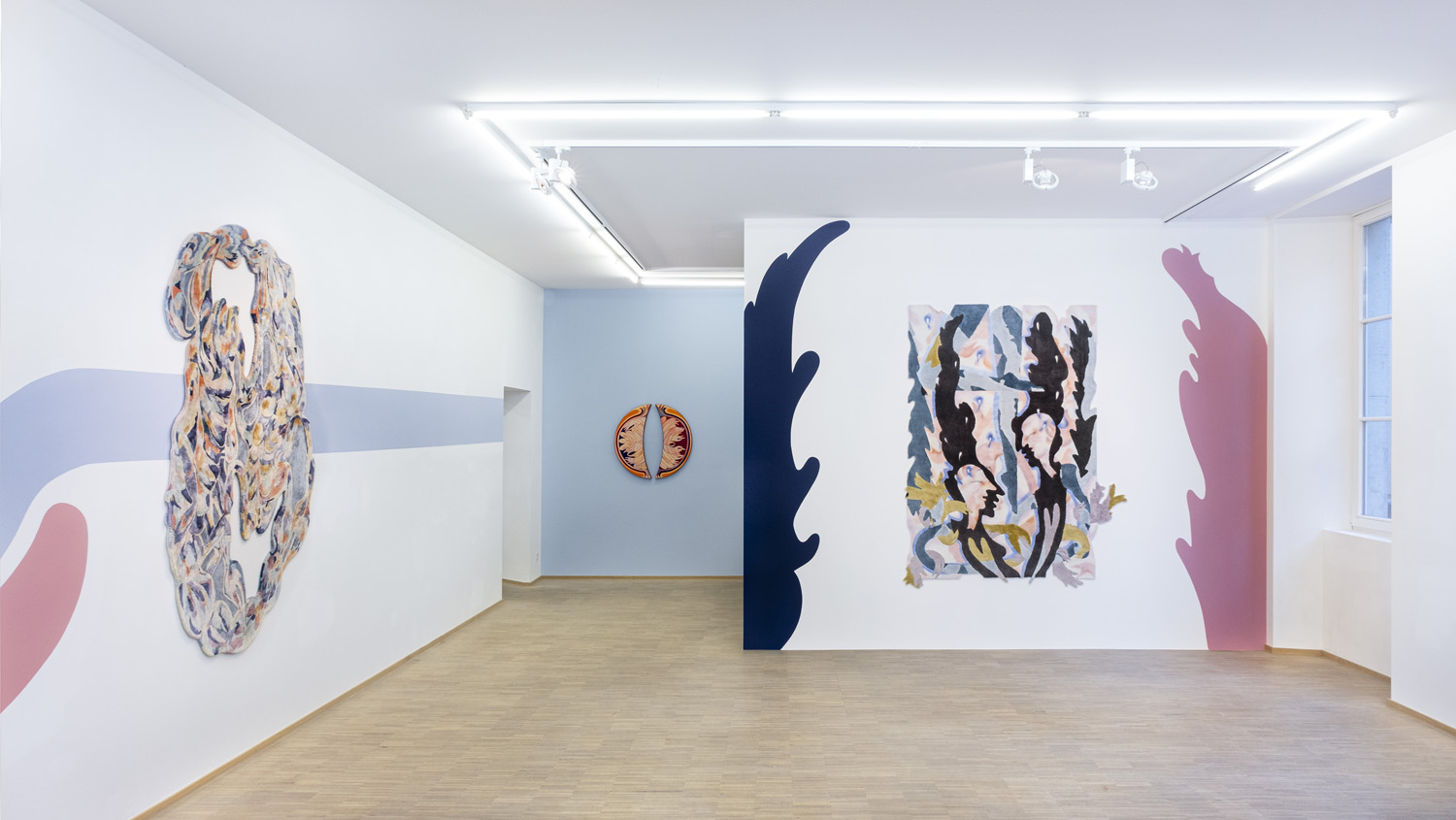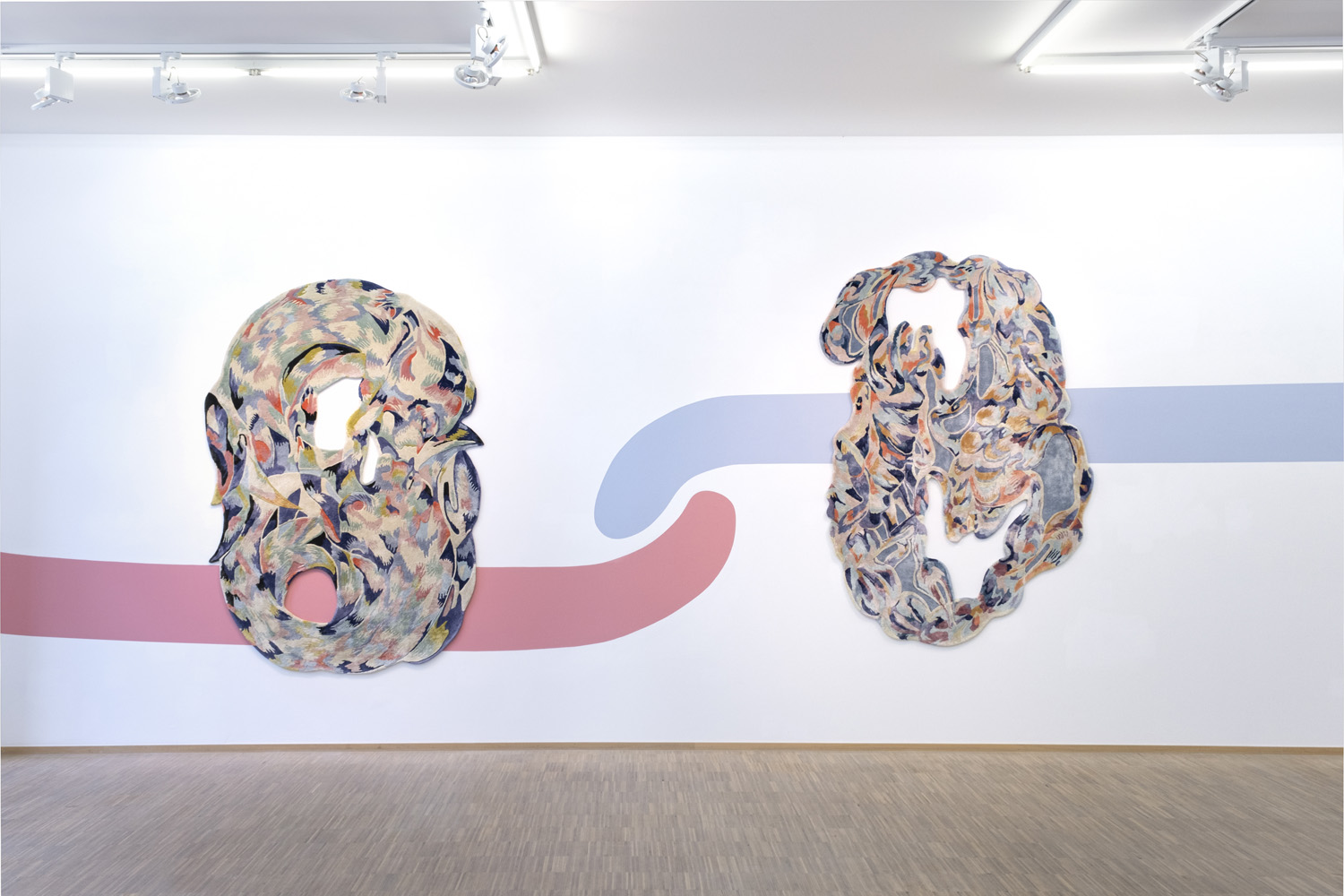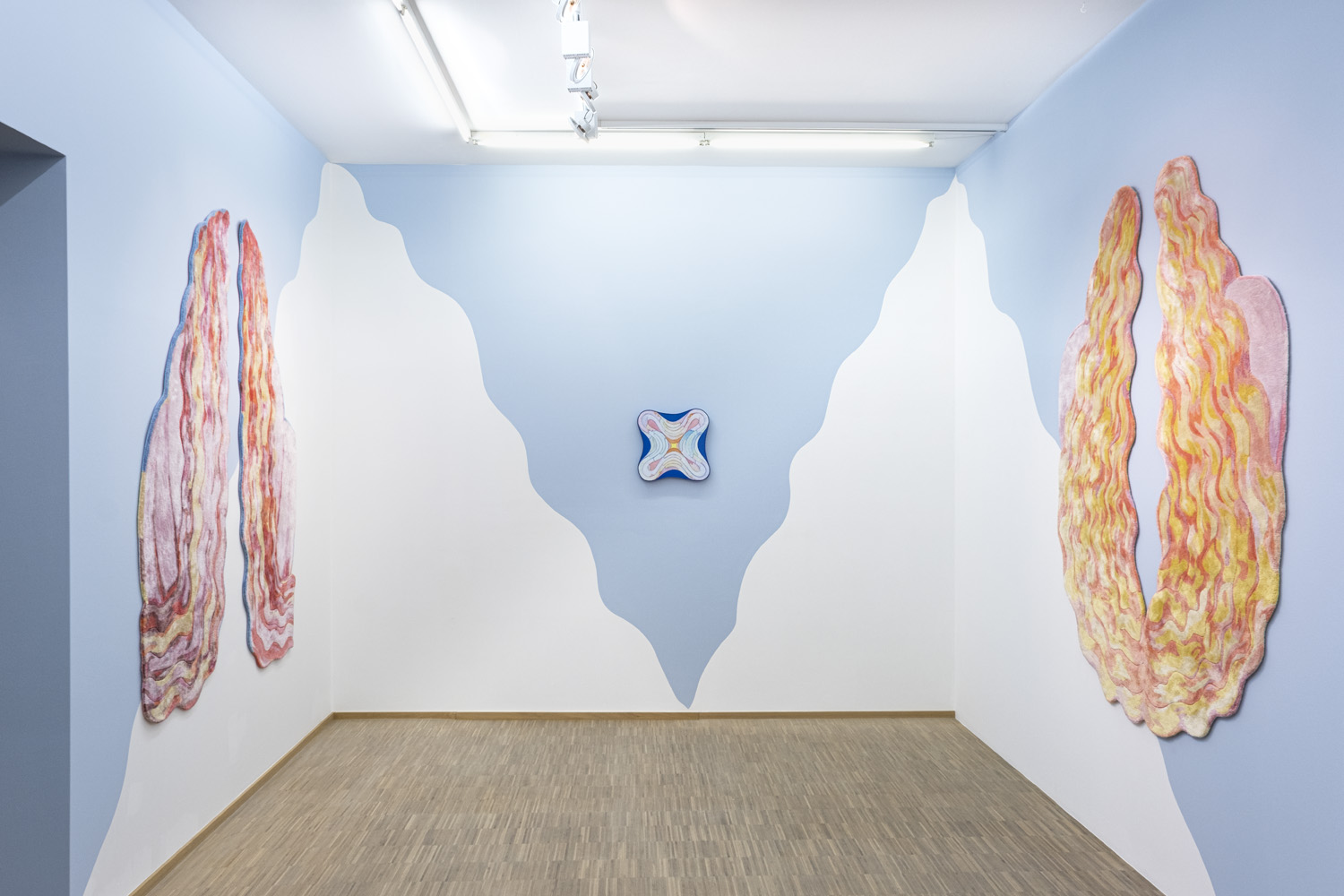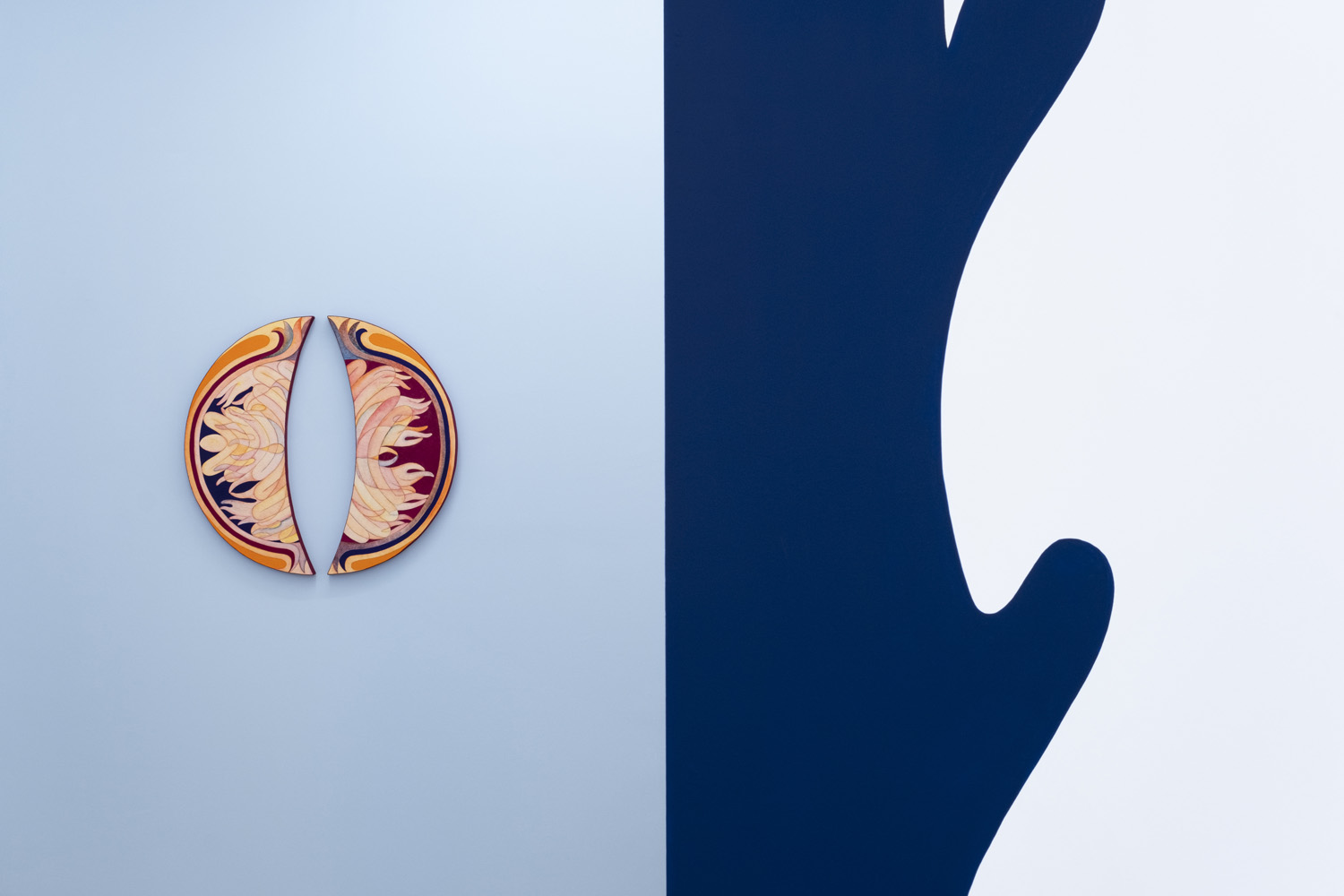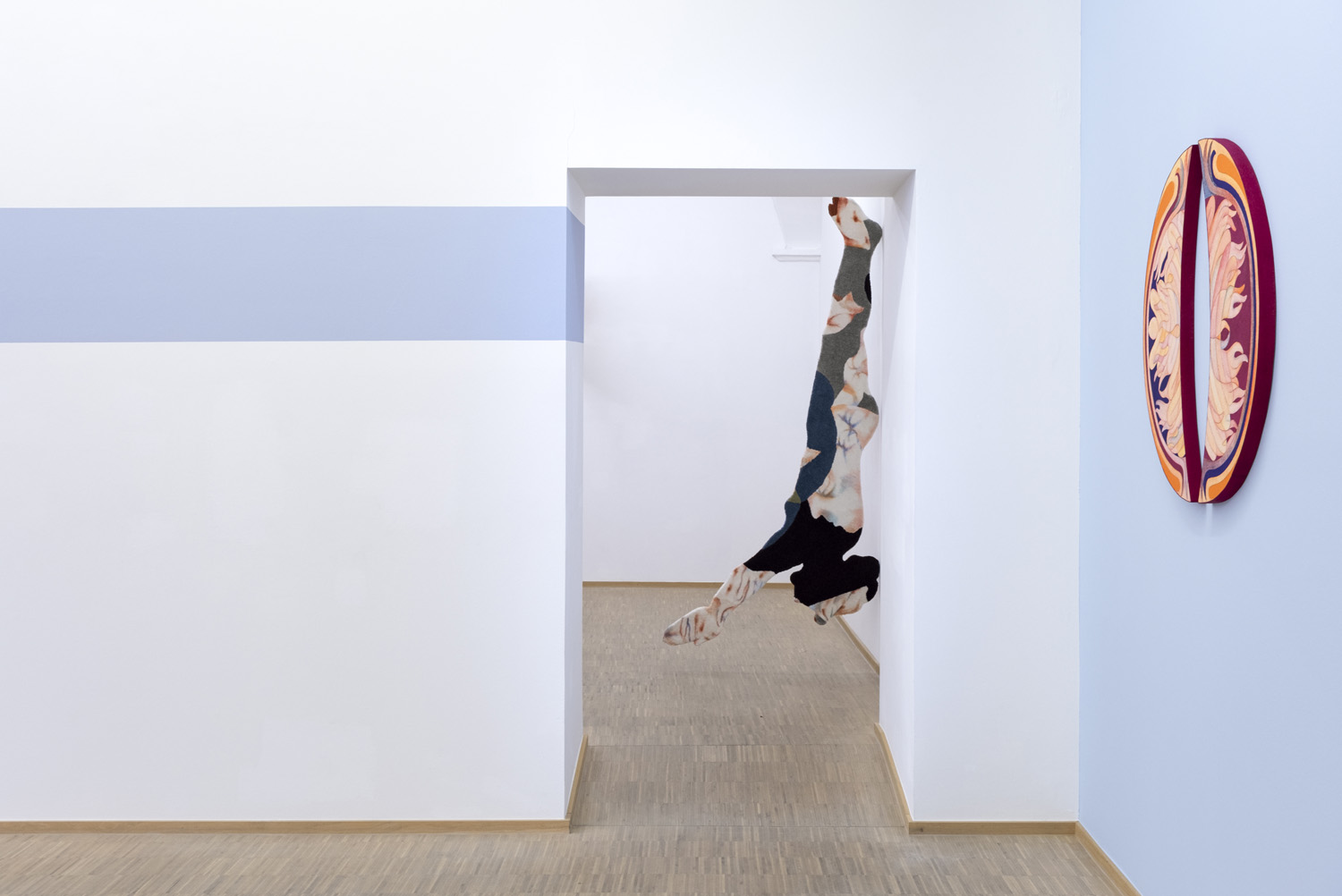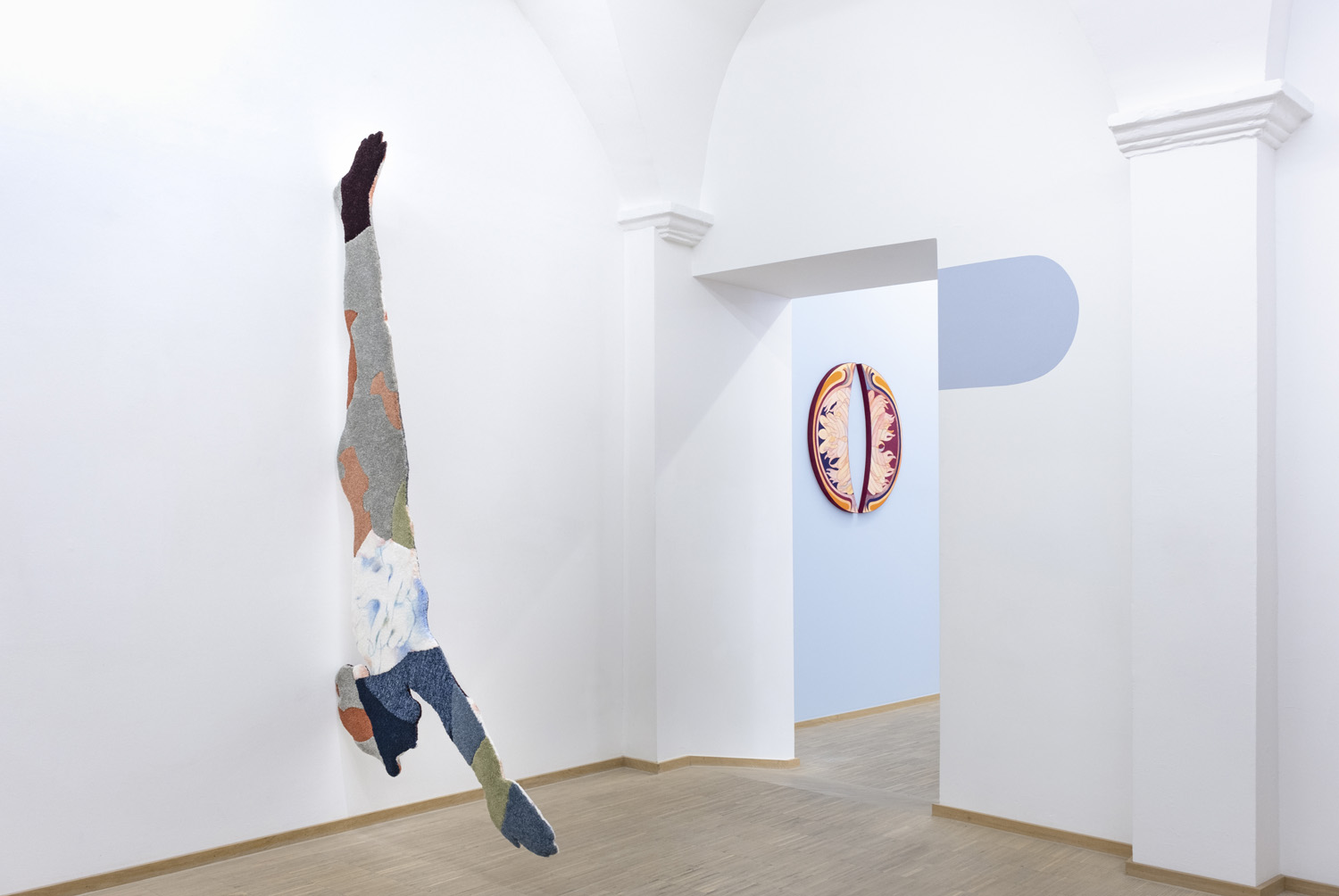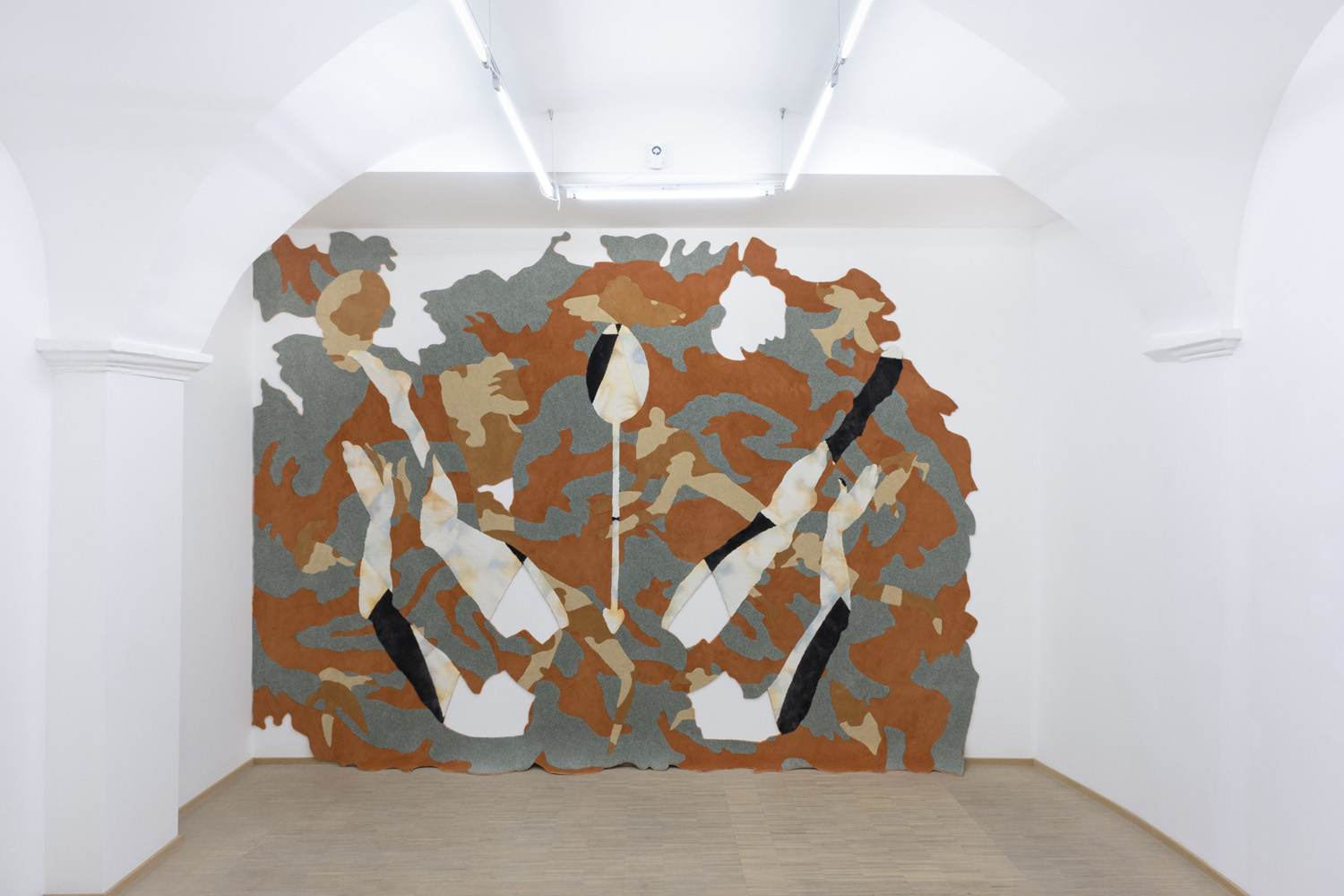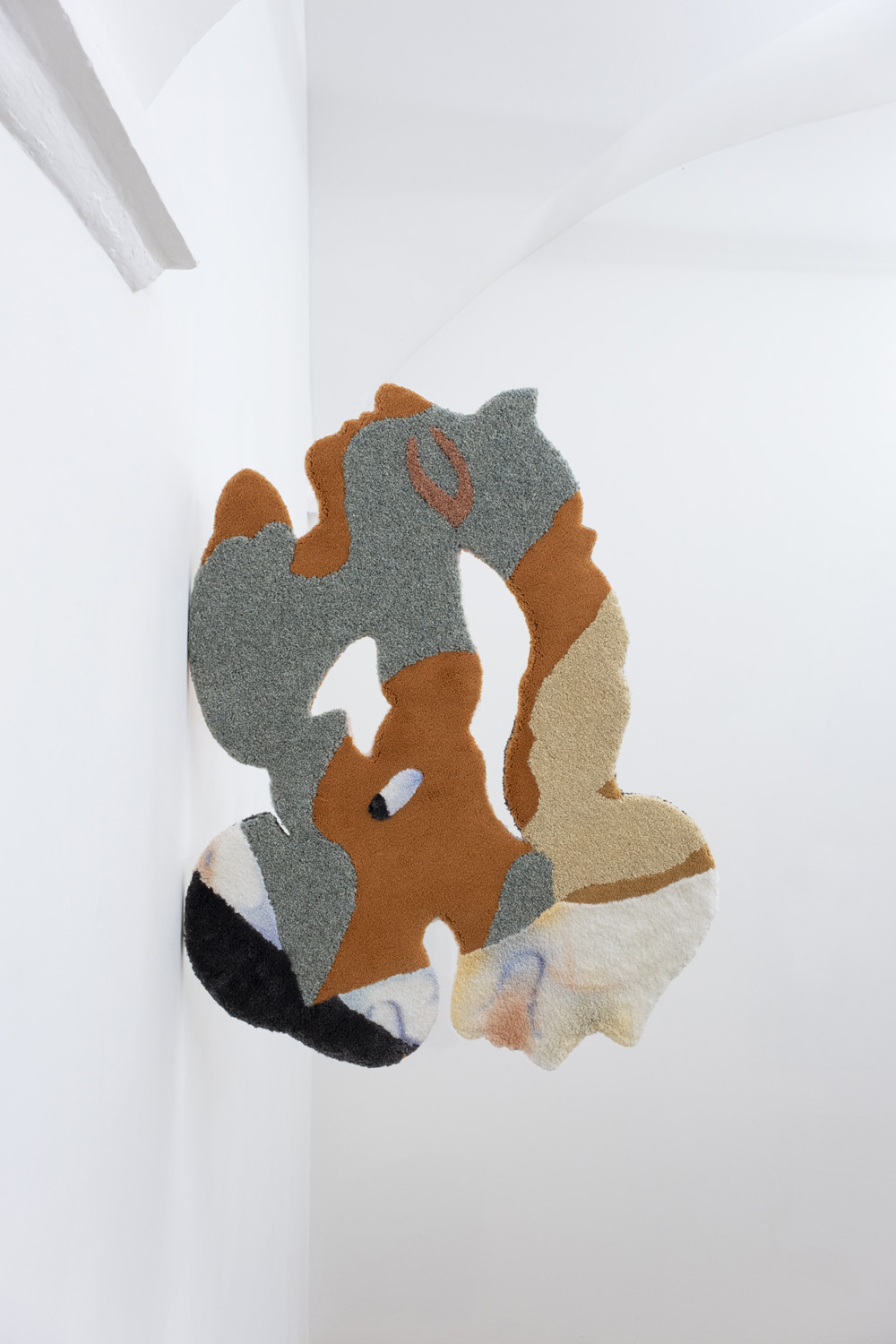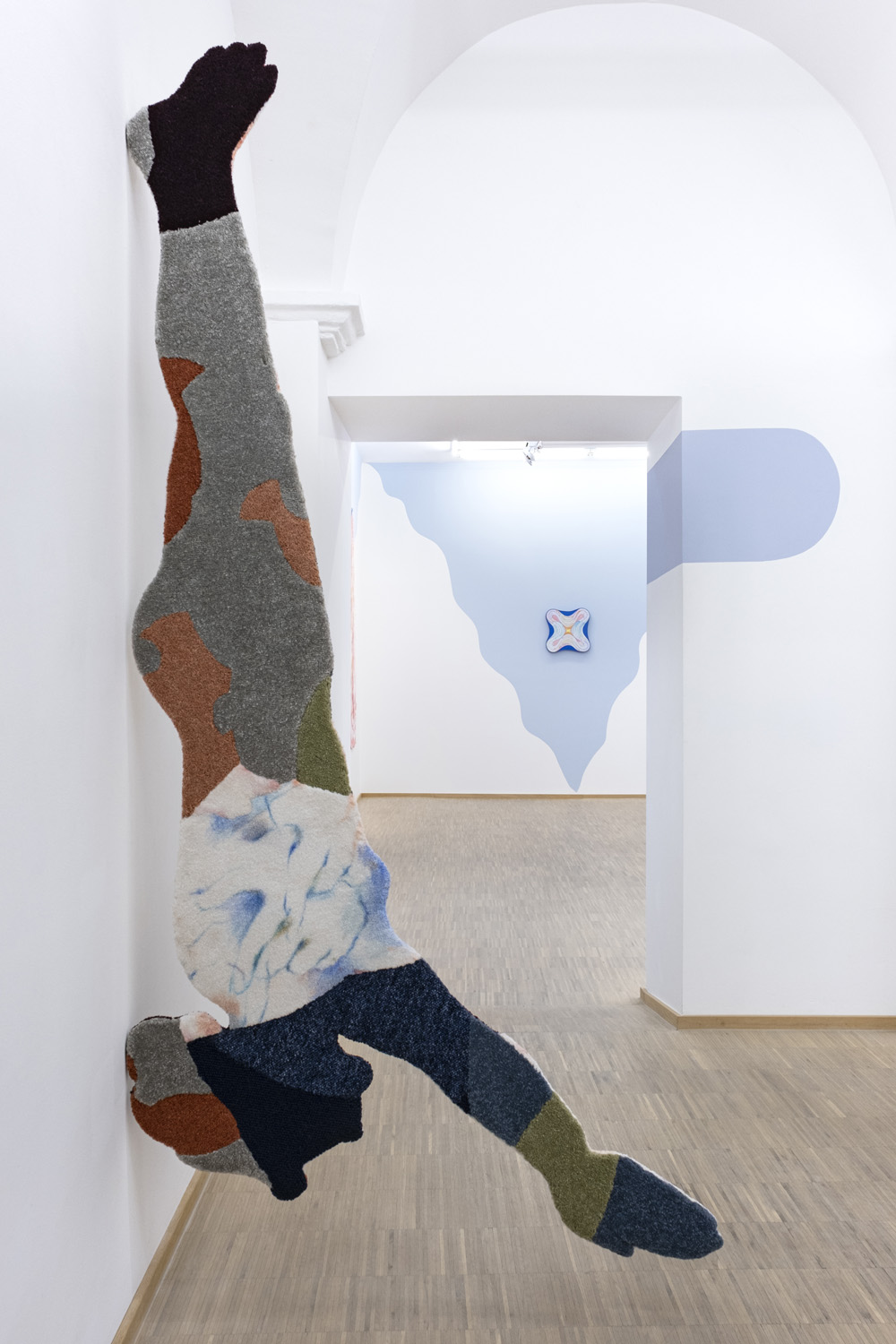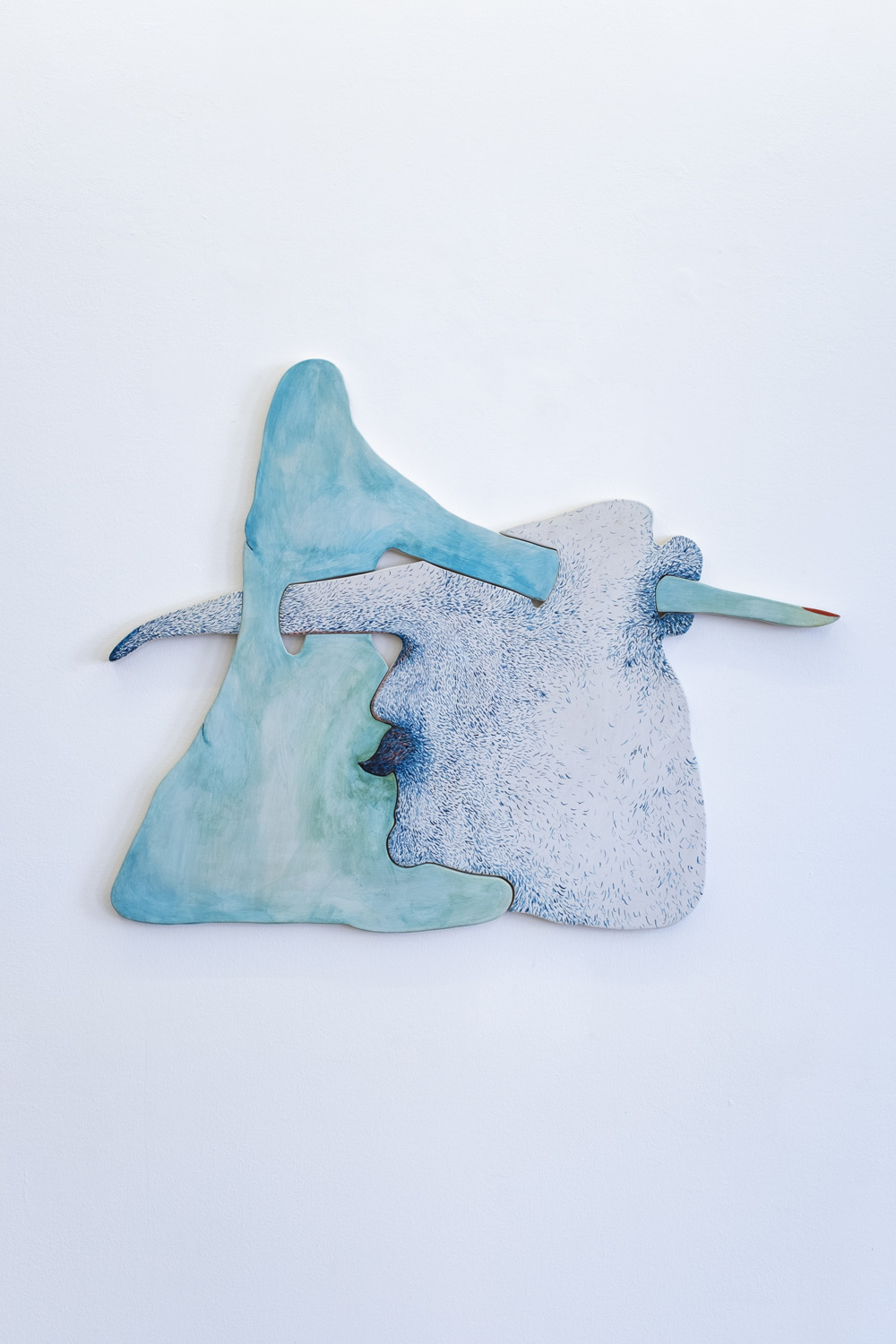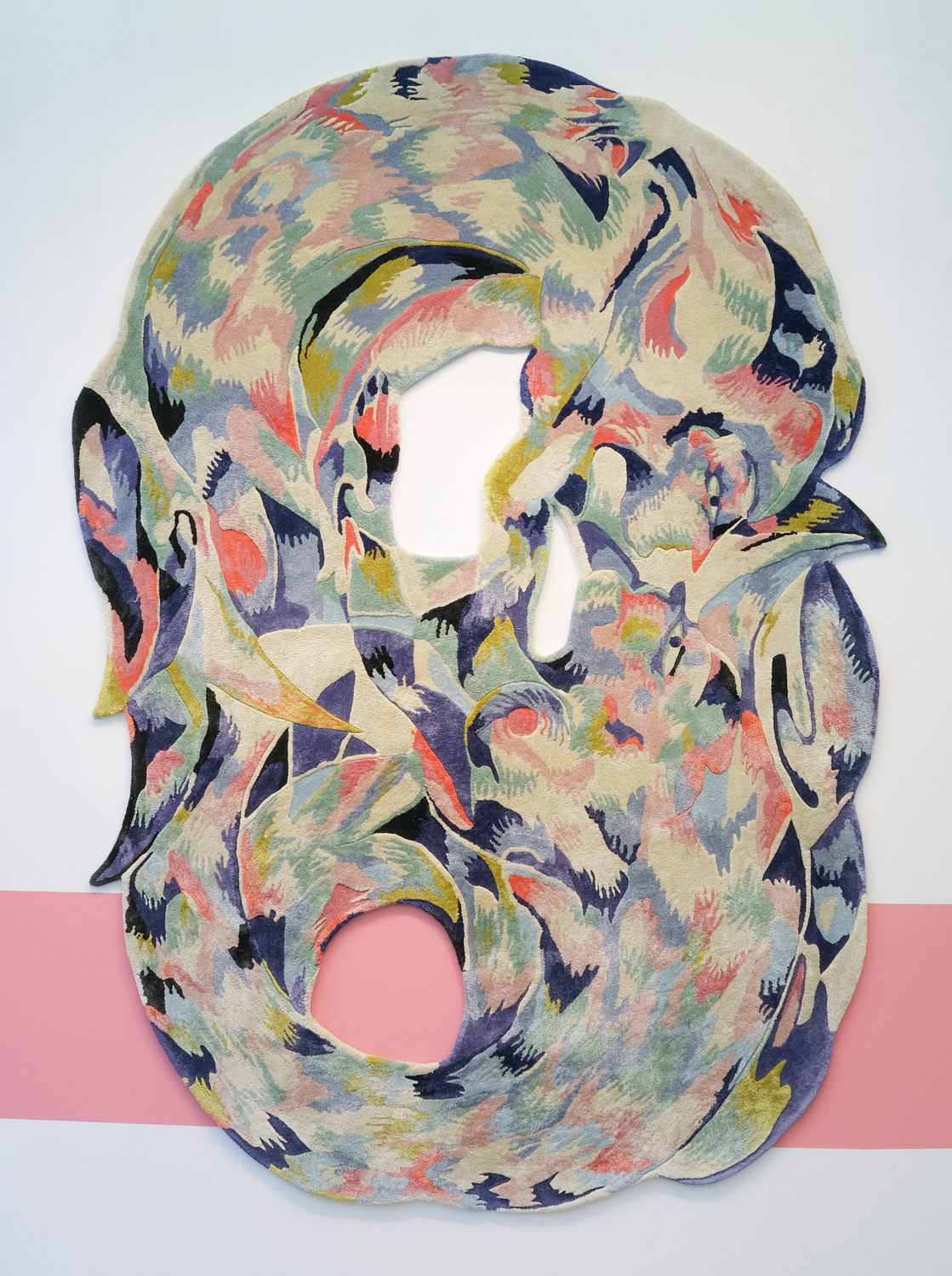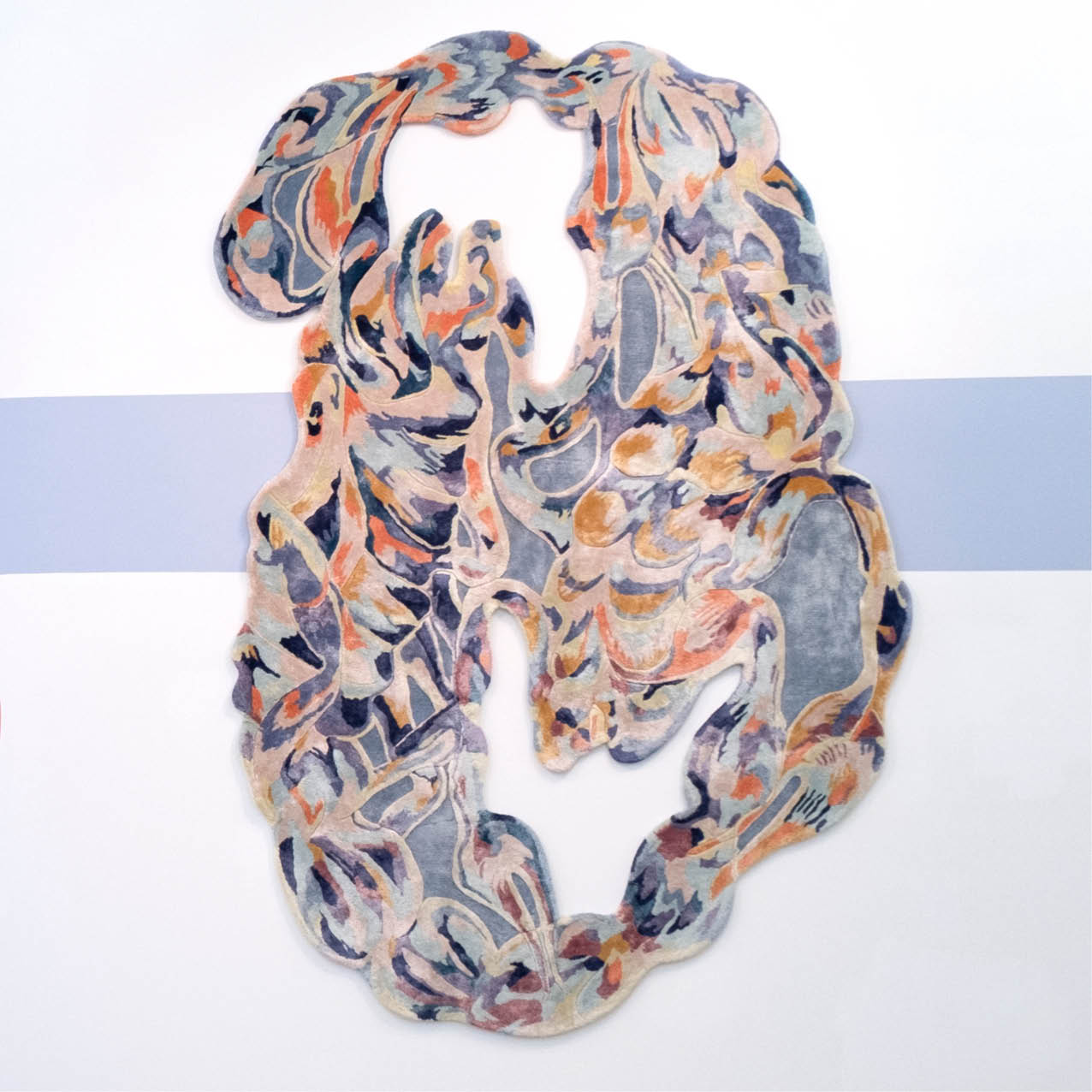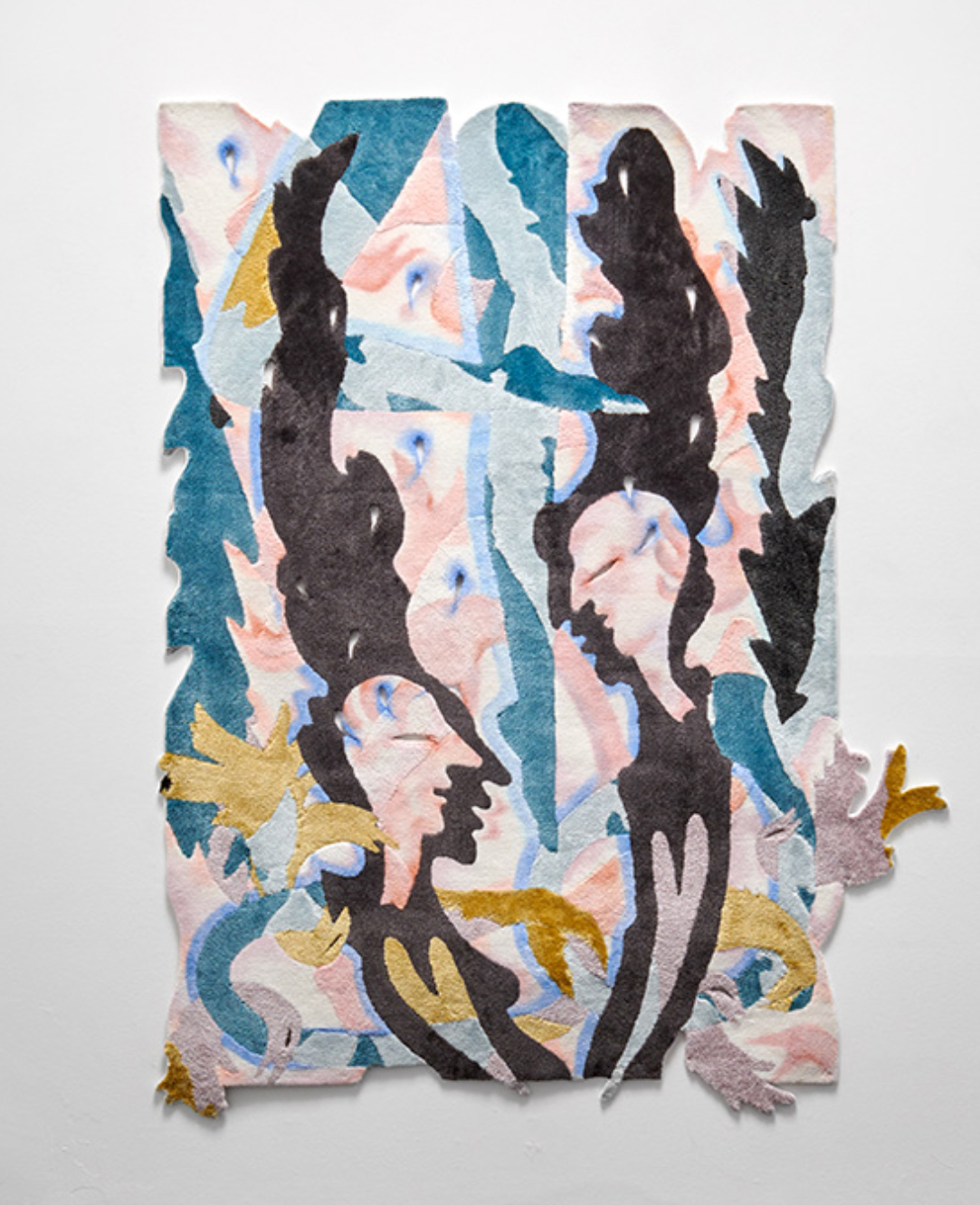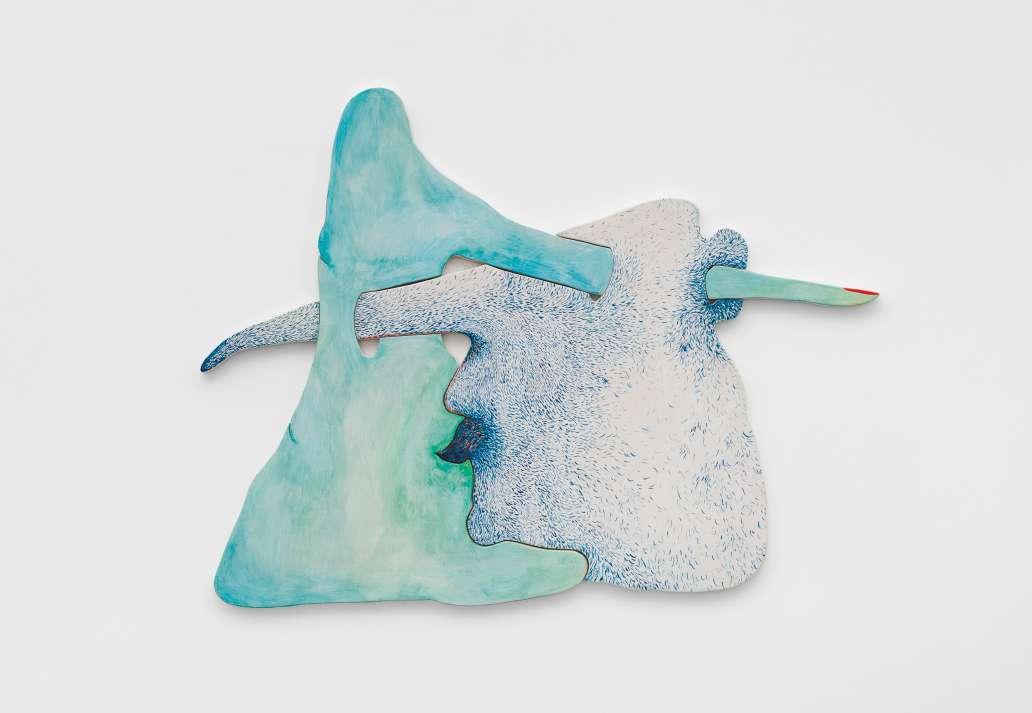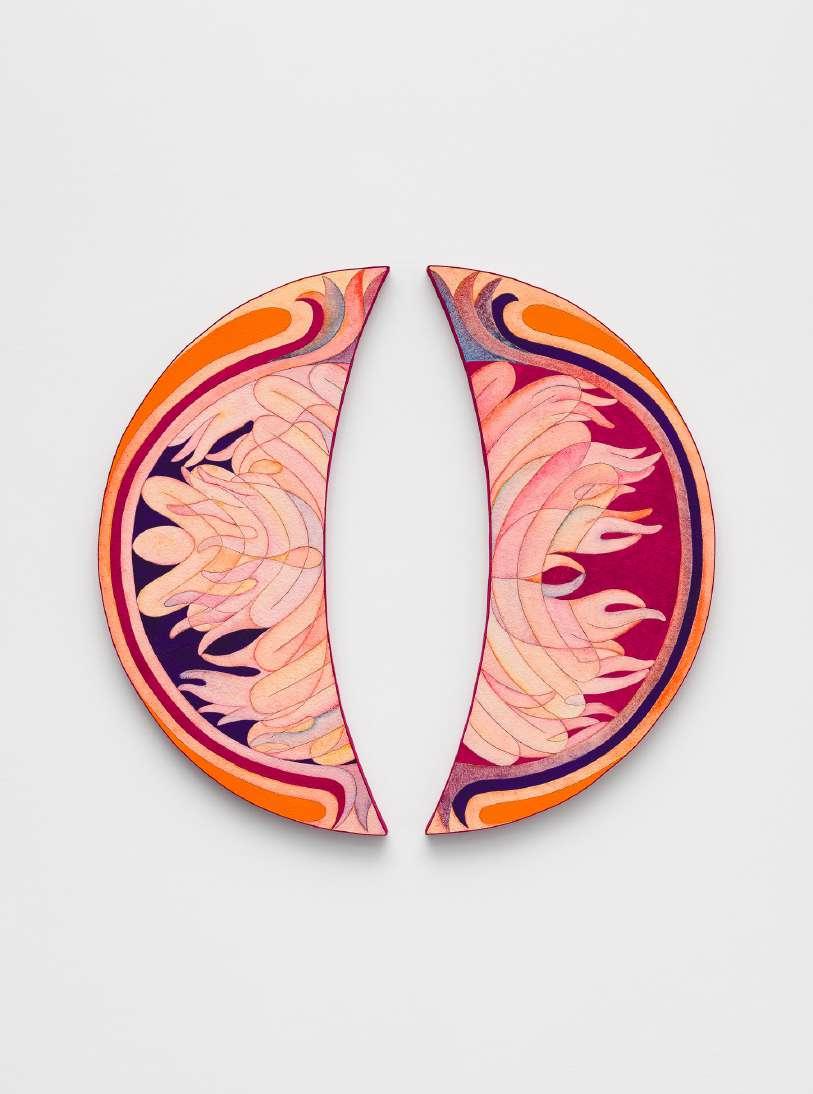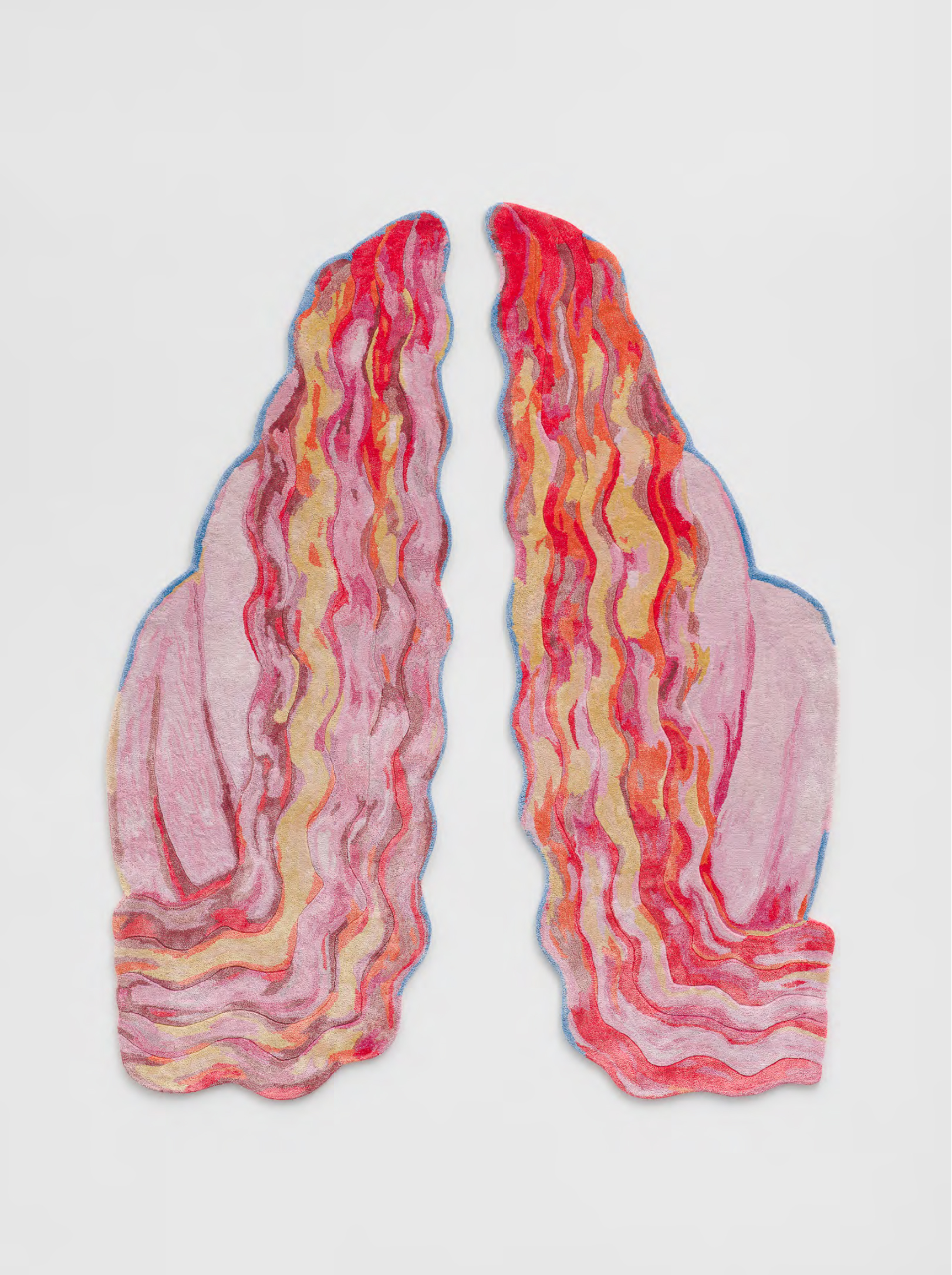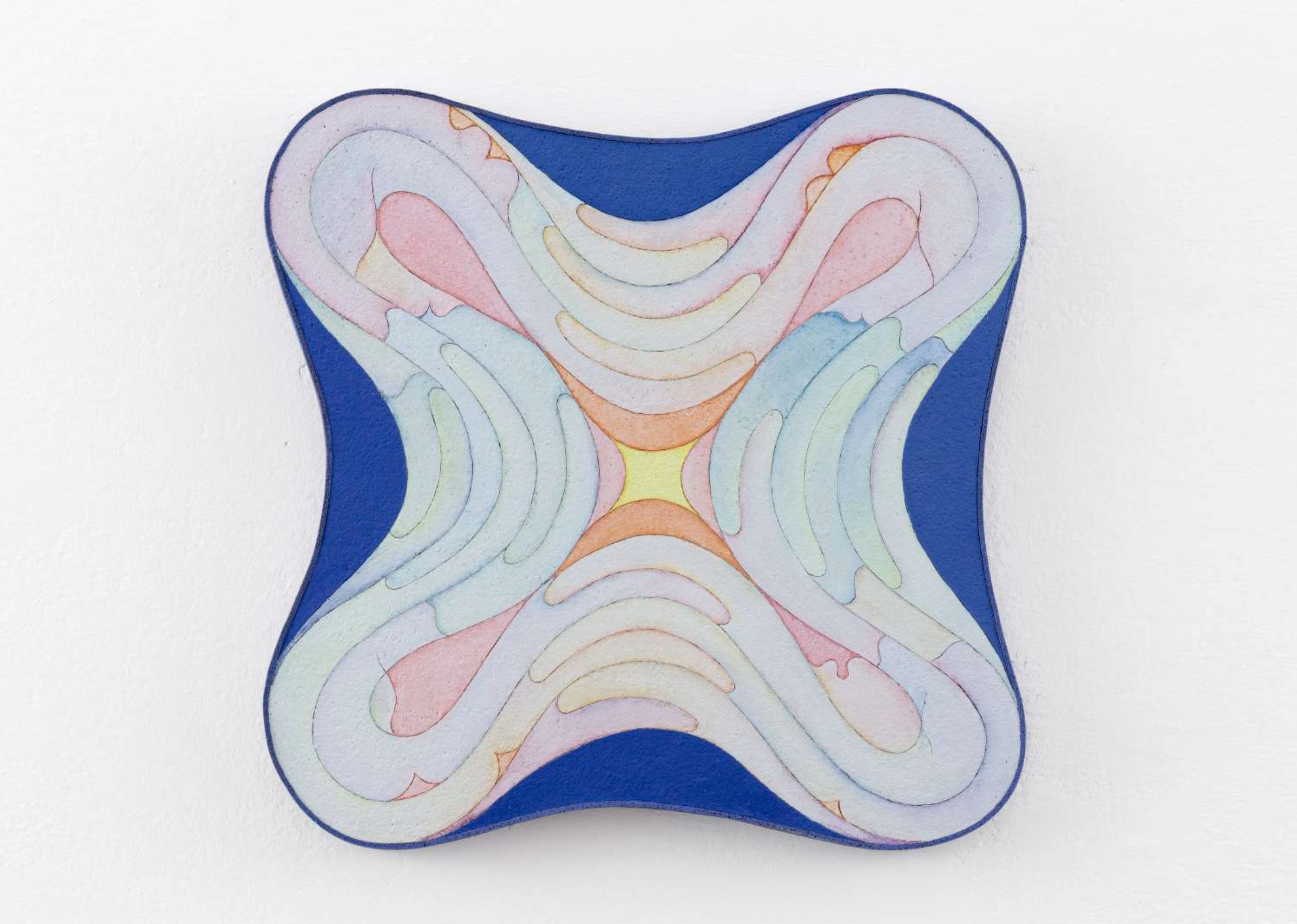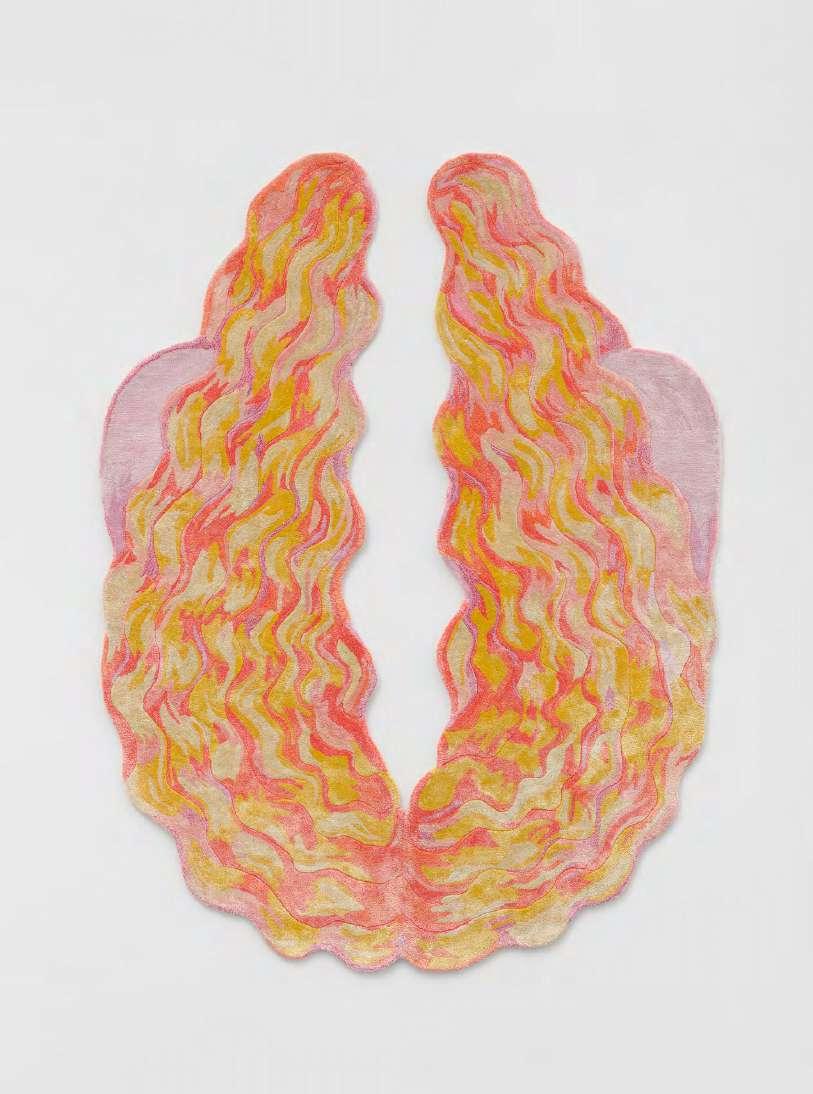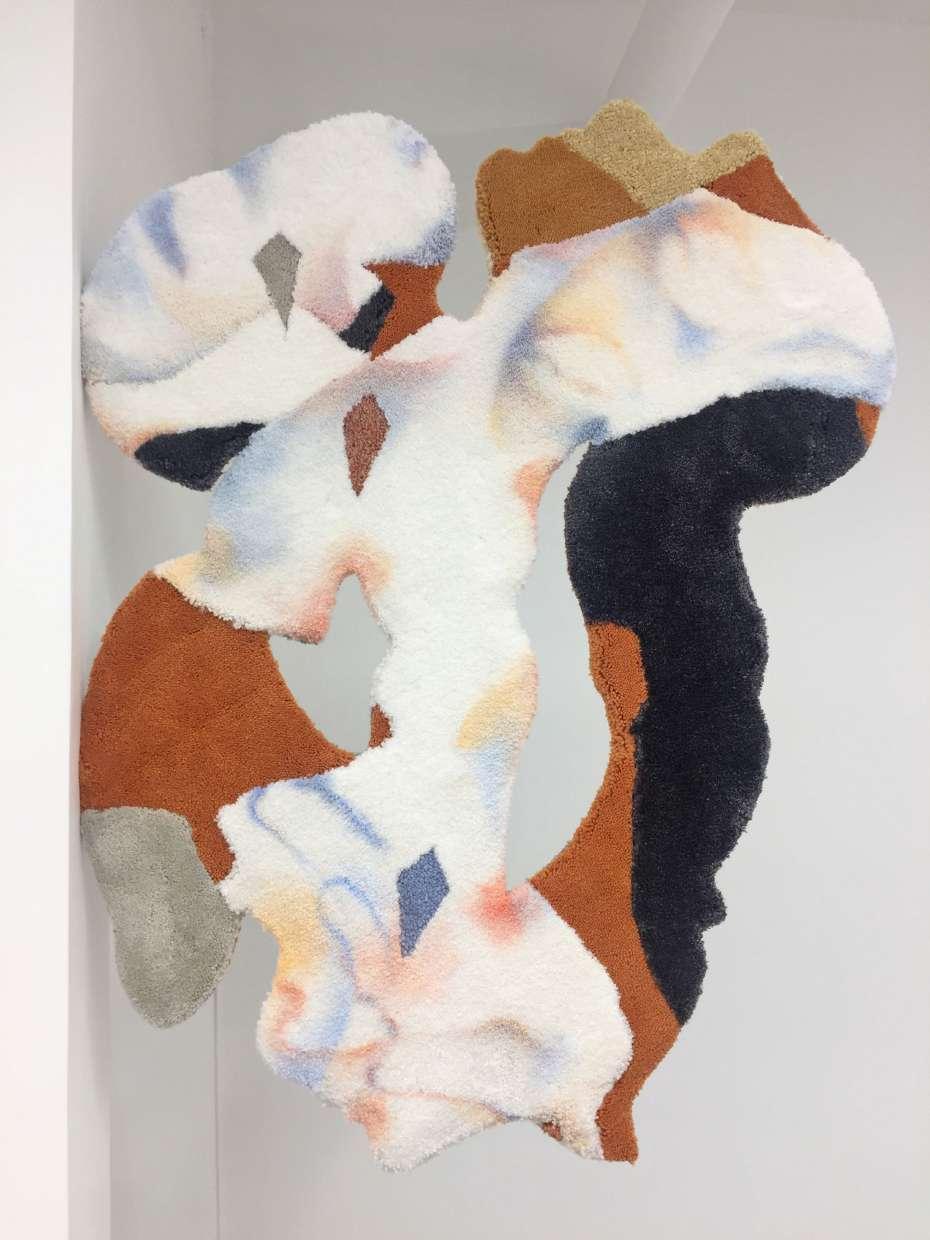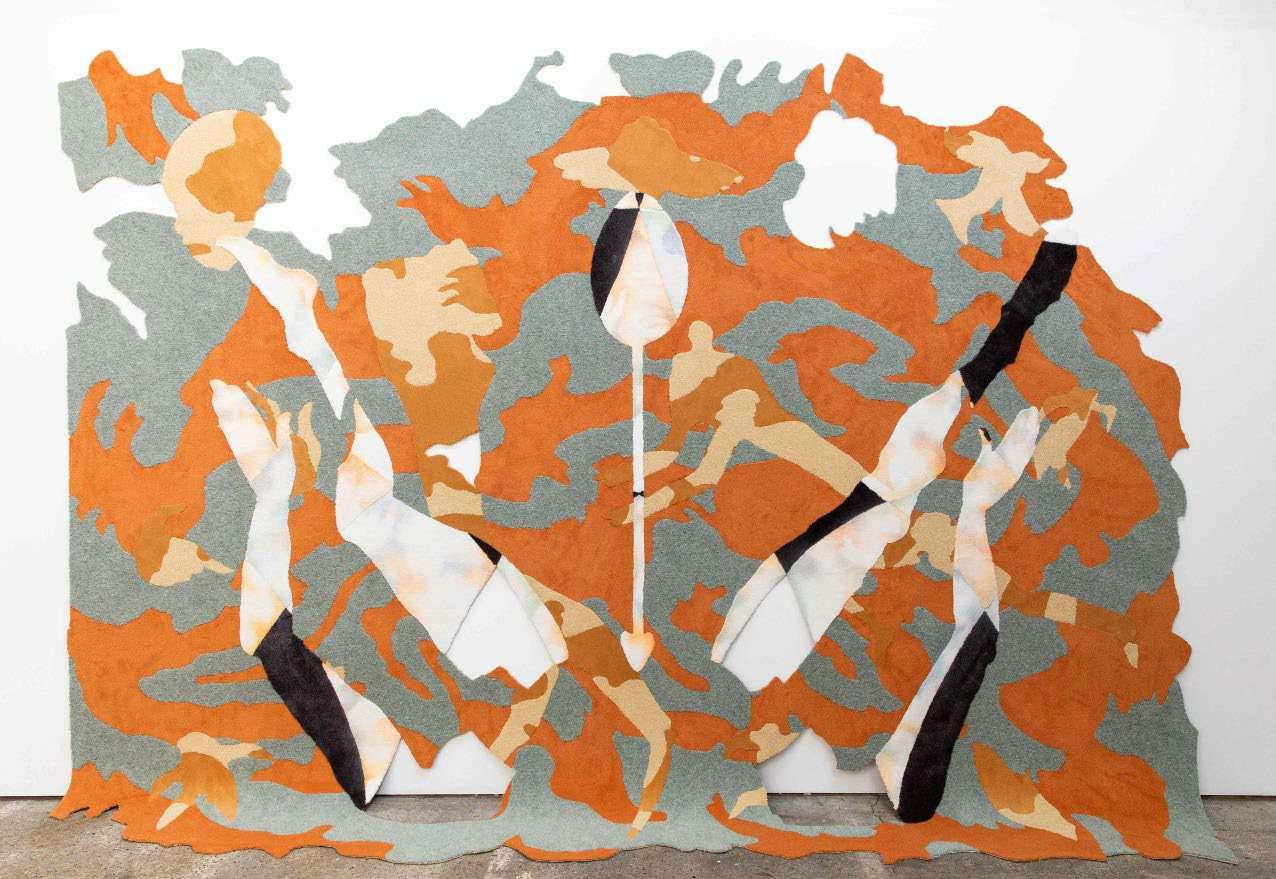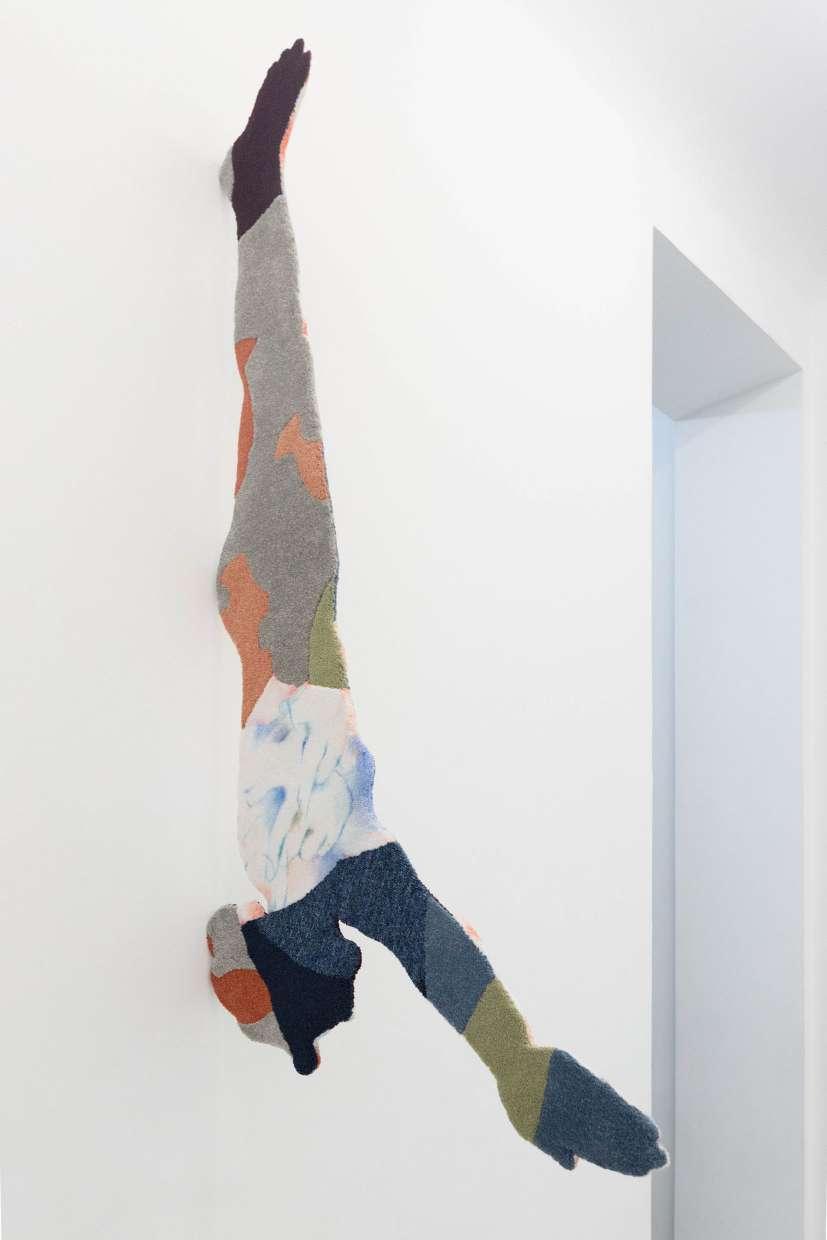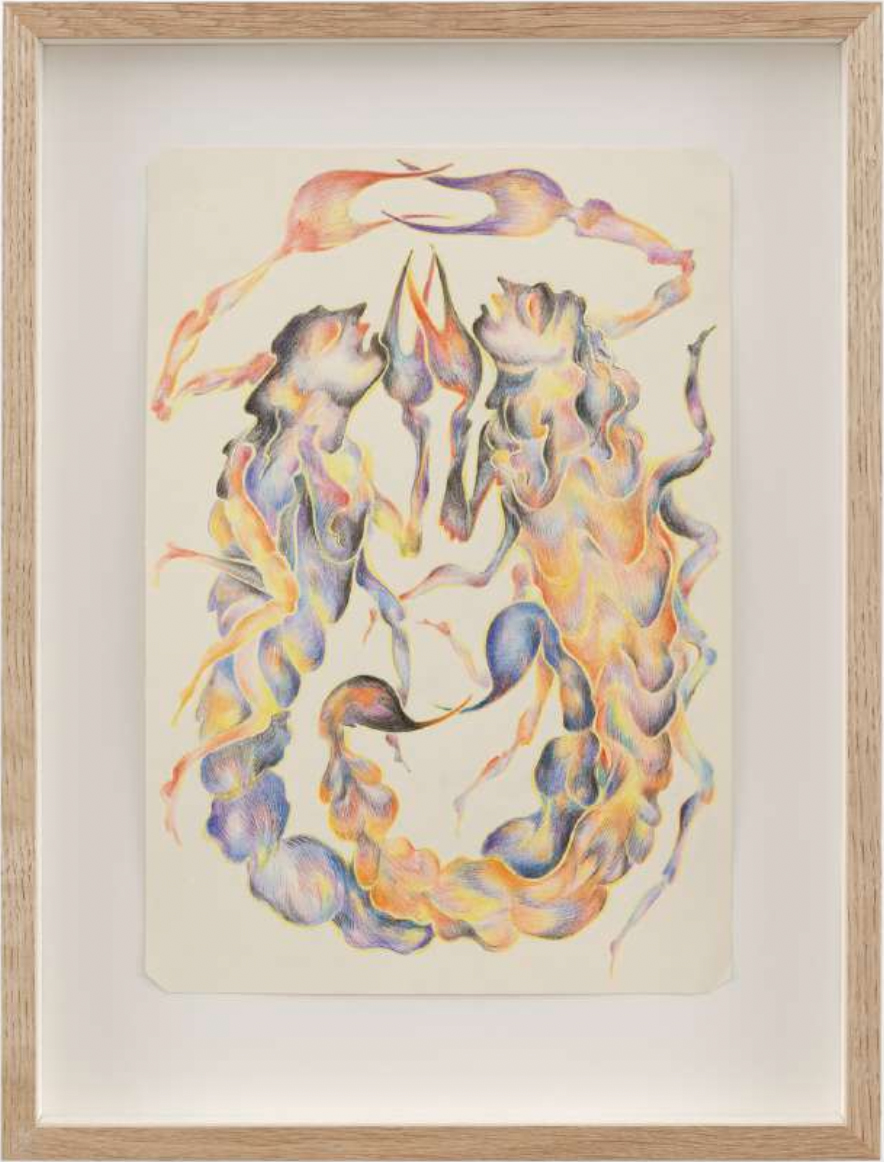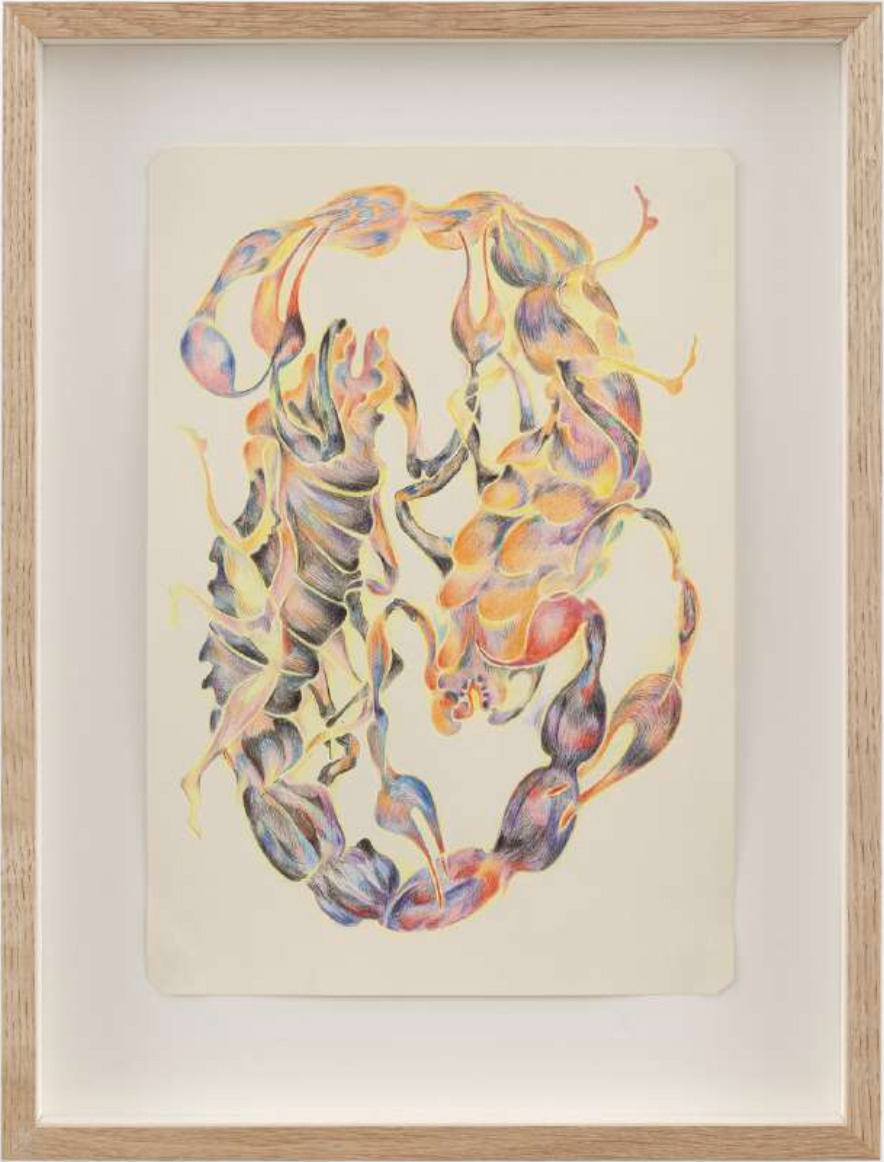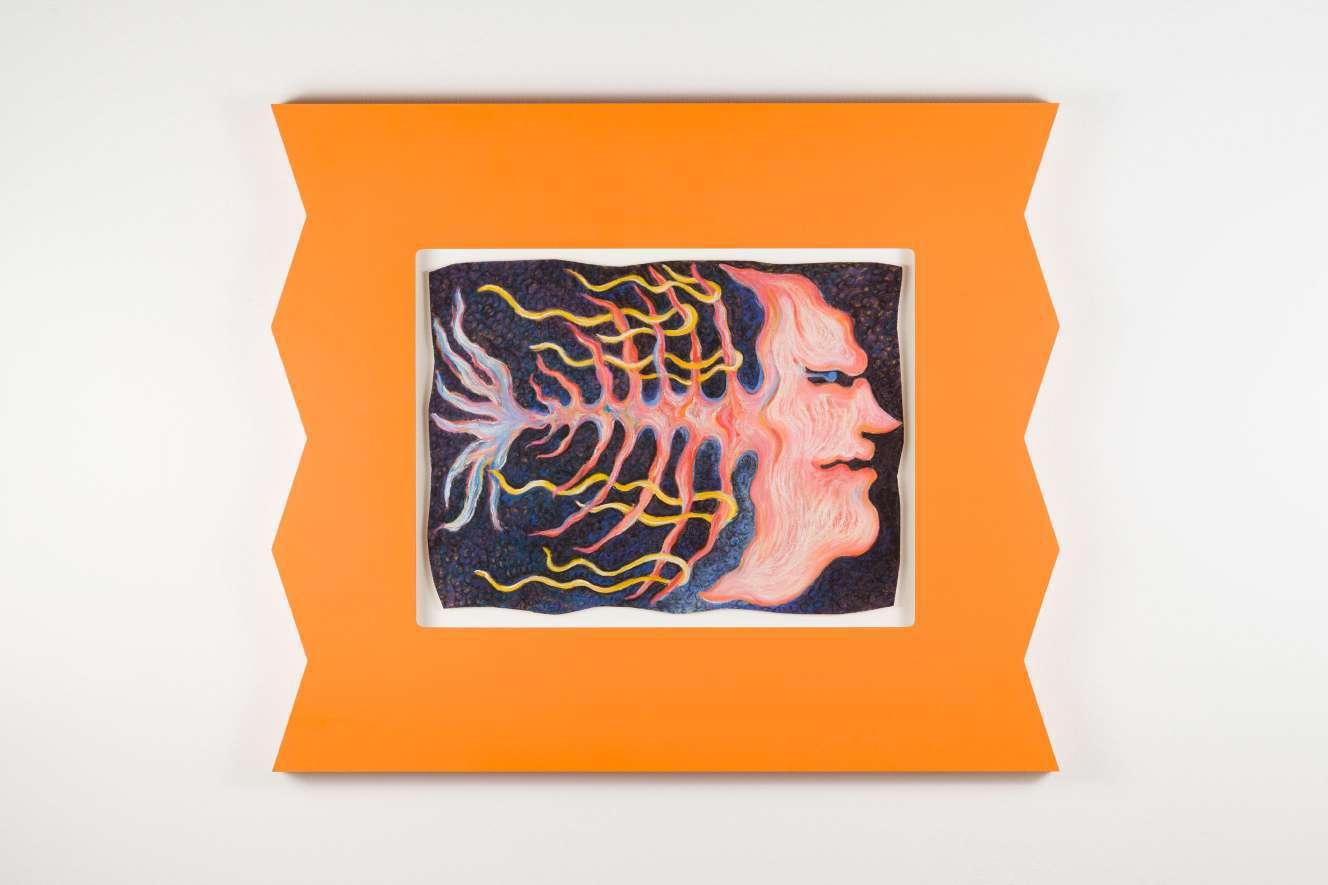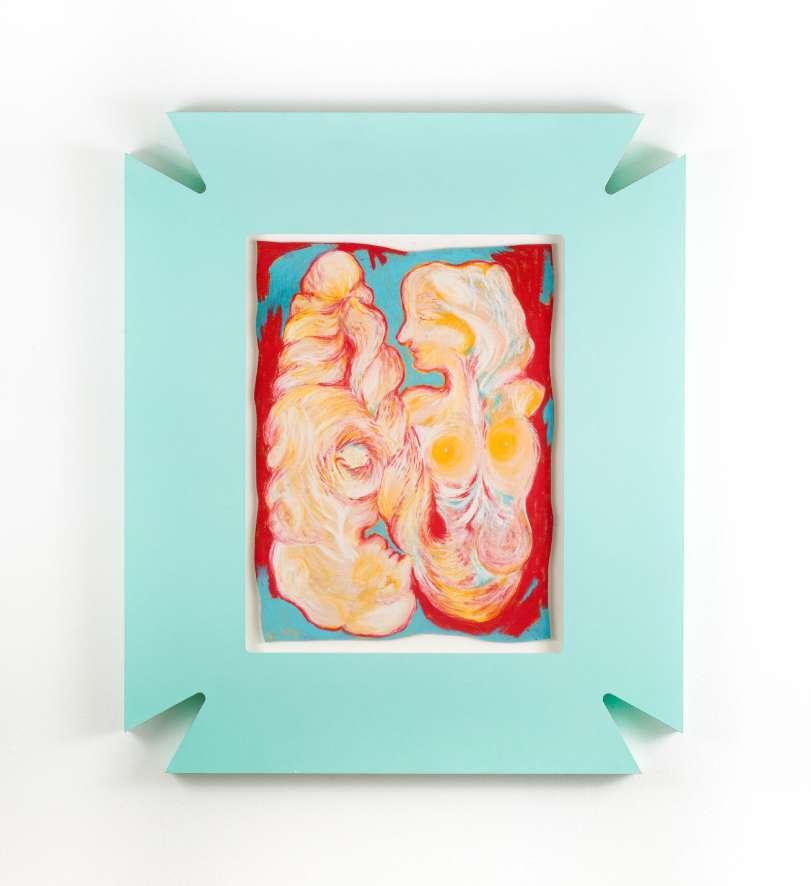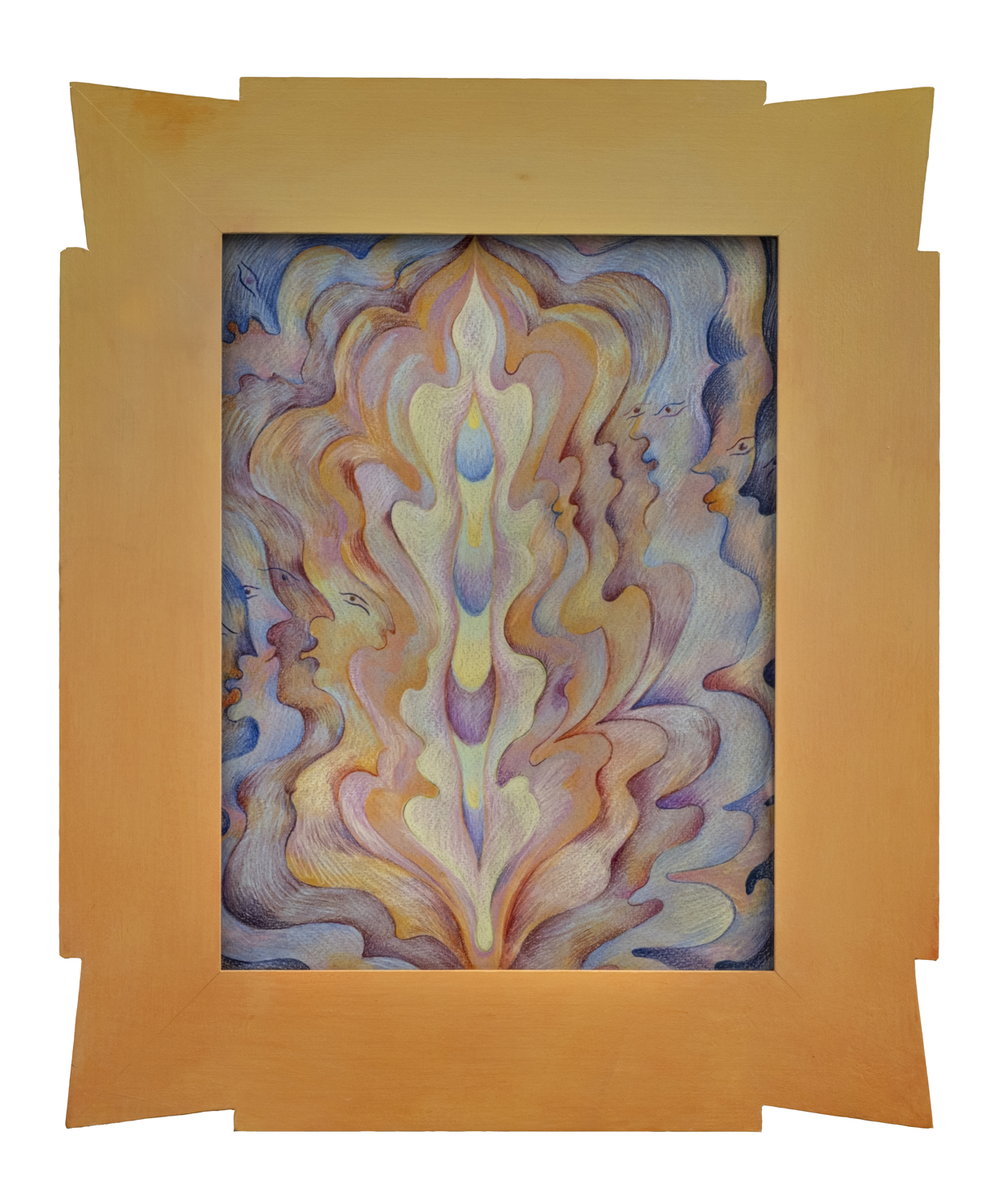Exhibited Works
Informations
Bea Bonafini
Bea Bonafini is a Rome and London based artist whose interdisciplinary practice draws from oneiric visions, overlapping personal and ancient mythologies. Her tactile, intimate worlds centre around sensuality, vulnerability and fantasy, forming swirling scenarios that are fragmented and multi-layered. Figures are evanescent and transcendental, referencing spiritual imagery where fluid bodies collide, disperse, swim, fly and fall. Bonafini’s work expands the possibilities of painting, tapestry and sculpture and their interrelationships. Holistic perspectives are developed in close dialogue with architecture, where space is approached as an extension to the work to envelop the viewer. Acting as protected spheres, Bonafini’s installations are openings to encounters between the earthly and the otherworldly.
--
THE POETIC TAPESTRIES OF BEA BONAFINI
‘Speaking of nirvana, it was there / Rare as the feathers on my dash from a phoenix'
—Frank Ocean
The work of Bea Bonafini expands from painting into media and materials commonly associated with textile arts and pottery. But her use of age-old techniques that have accompanied humanity since the dawn of time lends them a contemporary turn. Especially the art of carpet-making – or, in her case, making art with carpets – is reinterpreted into a subtly feminist stance. While her carpet inlays refer to the once female-dominated art of weaving, they are, quite literally, razor-sharp incisions into this tradition. Bonafini is not so much fascinated by the craft itself than by the handling of the products; the industrially manufactured carpets that are the starting point for many of her works thus become the material for a confident process of appropriation that can be seen as a defining feature of her work.
At first glance, all her works are characterised by a harmonious colour palette and a flowing imagery that is often described as sensual, intimate, tactile and eye-flattering. The painterly aspect of her work cannot be denied – she makes it explicit through her choice of motifs, her use of colour and her forays into various painterly domains, such as gouache with watercolour in Cosmic Fruit (2022) or pastel on mixed textiles in Shape-Shifting V[1] (2018). In interviews, the artist, who is often hailed as a shooting star, repeatedly describes herself as a ‘hybrid painter’ who tries to free herself from the straitjacket of academic painting without betraying her love for it. In her own words, ‘my work spirals out of painting discourse, taking it for a ride through different worlds’.
If one were to look for a key to her work, the concept of pictorial effect (Bildwirkung) might come in handy. This does not merely refer to the effect her art has on visitors, who are regularly enthralled by her exhibitions, but also to the renewal of an ancient cultural practice that brings together two strands: the history of art and the history of technology.
Etymologically speaking, the concept of Bildwirkung has a medieval doppelgänger, Bildwirkerei, which was used to describe both the action that consisted of incorporating images into woven textiles and the result of this technique, the tapestry itself. In other words, pictorial effect and carpet art have always been closely linked; in fact, tapestry in its heyday brought forth iconographic programmes and works that had a powerful ‘effect’ on contemporary audiences, whose experience oscillated between being immersed and being overwhelmed. This artistic genre reached its early climax between 1373 and 1382 in the Apocalypse Tapestry of Angers, with its impressive 103 metres in length and 4.3 metres in height. Although Bonafini is only marginally interested in the implicit gestures of power of such medieval projects, she likes to reference historic works and does so confidently – in 2019, for instance, she created a complex carpet installation for the Zabludowicz Collection in London, inspired by the historic floors of the Siena Cathedral. She consistently takes into account the specificities of the exhibition space and develops stunning exhibition concepts that push the boundaries of painting into the real space and almost physically envelop viewers.
This approach is further enhanced by the figures in her works, which often appear fleeting and transcendent, evoking spiritual images in which flowing bodies collide, dissolve, swim, fly or fall. In Noses and Holes (2015), two stylised heads lovingly commingle, each sticking its long nose through the other’s eyehole to form a powerful image of infinity reminiscent of ancient myths and stories. In Diver (2018), the artist shows a falling – or maybe floating – figure that has been installed on the wall in such a way that it can be viewed from the front and from the back, and whose connection to painting would be entirely lost if it weren’t for the handcrafted composition of the carpet cut-outs, which were assembled in the manner of a painting.
Bonafini’s installations expand the possibilities of painting, tapestry and sculpture by exploring their multiple relationships. In this sense, her work can be read like a coming-of-age novel where the reader – or viewer, in this case – accompanies the artist in the journey that leads her to outgrow her own idea of painting.
Frank-Thorsten Moll, 2022
FR
Les tapisseries poétiques de Bea Bonafini
« Speaking of nirvana, it was there / Rare as
the feathers on my dash from a phoenix »
—Frank Ocean
L’œuvre de Bea Bonafini transpose la peinture pour investir des procédés et des matériaux plus volontiers associés aux arts textiles et à la poterie. Dans son travail, elle synthétise ces techniques séculaires et son esthétique contemporaine pour se positionner au sommet de l’avant-garde, mais avec tout le confort et sans l'aliénation que dénote généralement tout ce qui est à la pointe du monde de l'art. L’art de la tapisserie, en particulier – ou, dans son cas, l’art créé à partir de la tapisserie – y est réinterprété au profit d’un propos subtilement féministe. Alors que ses « marqueteries de tapis » renvoient à l’art du tissage comme champ d’activité autrefois réservé aux femmes, elles opèrent littéralement des incisions dans cette tradition. Ce n’est pas tant l’artisanat en tant que tel qui fascine l’artiste, mais la manipulation des produits, tapis fabriqués industriellement, qui constituent le point de départ d'un grand nombre de ses œuvres, deviennent ainsi le matériau d'un processus d'appropriation confiant et la caractéristique principales de son travail.
À première vue, toutes ses œuvres se caractéritiques par des couleurs harmonieuses et un vocabulaire formel fluide, souvent décrit comme sensuel, intime, tactile et agréable au regard. L’aspect pictural de son travail ne saurait être nié – elle le rend explicite à travers son choix des motifs, son utilisation de la couleur et ses incursions dans des techniques picturales comme la gouache et les aquarelles dans Cosmic Fruit (2022) ou le pastel sur textiles mixtes dans Shape-Shifting II (2018). Dans ses entretiens, l’artiste, souvent qualifiée de shooting star, se décrit comme une « peintre hybride » qui tente de s’affranchir du carcan de la peinture académique sans trahir son amour pour celle-ci. Selon ses propres mots, son travail « se développe à partir d’un discours sur la peinture que je promène à travers différents mondes ».
Si l’on cherchait à qualifier son travail, on pourrait invoquer le concept d’« effet pictural » (Bildwirkung), qui ne renvoie pas seulement à l’effet captivant que son art produit régulièrement sur les visiteurs de ses expositions, mais aussi au renouvellement d’une pratique culturelle immémoriale qui réunit deux courants : l’histoire de l’art et de l’histoire des techniques.
Étymologiquement parlant, le terme de Bildwirkung a un jumeau médiéval : Bildwirkerei, en français « tapisserie », qui décrit à la fois l’action consistant à incorporer des images dans des textiles tissés et le résultat de cette opération, la tapisserie elle-même. Autrement dit, effet pictural et art du tapis ont toujours été étroitement liés ; à son apogée, la tapisserie a ainsi donné naissance à des programmes iconographiques et des œuvres dont l’« effet » sur le spectateur contemporain oscillait entre immersion et submersion. Ce genre artistique atteignit son apogée entre 1373 et 1382 dans la Tapisserie de l’Apocalypse d’Angers, avec ses dimensions impressionnantes (103 mètres de longueur pour 4,3 mètres de hauteur). Bien que Bea Bonafini ne s’intéresse qu’en marge aux expressions de pouvoir implicites dans ces ouvrages médiévaux, elle prend souvent pour référence des œuvres historiques, qu’elle cite avec une grande assurance – en 2019, par exemple, elle a réalisé une installation complexe pour la collection Zabludowicz à Londres, inspirée par le pavement historique de la cathédrale de Sienne. Son attention aux spécificités de l’espace d’exposition lui permet de développer des concepts d’exposition surprenants qui repoussent les limites de la peinture en l’intégrant à l’espace réel de manière à littéralement envelopper le spectateur.
Cette impression est encore renforcée par les figures dans ses œuvres, souvent éphémères et transcendantes, qui évoquent des images spirituelles dans lesquelles les corps se heurtent, se dissolvent, nagent, volent ou tombent. Dans Noses and Holes (2015), deux têtes stylisées s’embrassent, leurs nez pointus perçant l’œil de leur vis-à-vis pour former une image puissante de l’infini qui n’est pas sans rappeler les mythes ou histoires antiques. Dans Diver (2018), l’artiste représente une figure tombante – à moins qu’elle ne flotte – qu’elle place contre le mur de manière à ce qu’elle puisse être contemplée de face et de dos, et dont le rapport à la peinture serait à peine perceptible s’il n’y avait la composition artisanale des fragments de tapis, assemblés à la manière d’un tableau.
Les œuvres de Bea Bonafini élargissent les possibilités de la peinture, de la tapisserie et de la sculpture en explorant les multiples connexions qui les relient entre elles. Elles regorgent d'histoire, de traditions et d'idées et pourtant, devant ces figures et ces formes fluides et imaginatives, on ne peut s'empêcher de penser que, grâce à ses pouvoirs créatifs, ces œuvres se sont transformées en quelque chose qui leur est entièrement propre, quelque chose d'autre et de distinct, ou peut-être même, comme le suggère le titre de l'exposition, quelque chose de surnaturel.
Frank-Thorsten Moll, 2022
Documents
Bea Bonafini
Join us on Thursday 29 September for the opening of Bea Bonafini's solo show at Nosbaum Reding | Luxembourg.
The exhibition will be on view from 29 September to 5 November 2022.
Nosbaum Reding | Luxembourg
2 rue Wiltheim
2733 Luxembourg
Luxembourg
